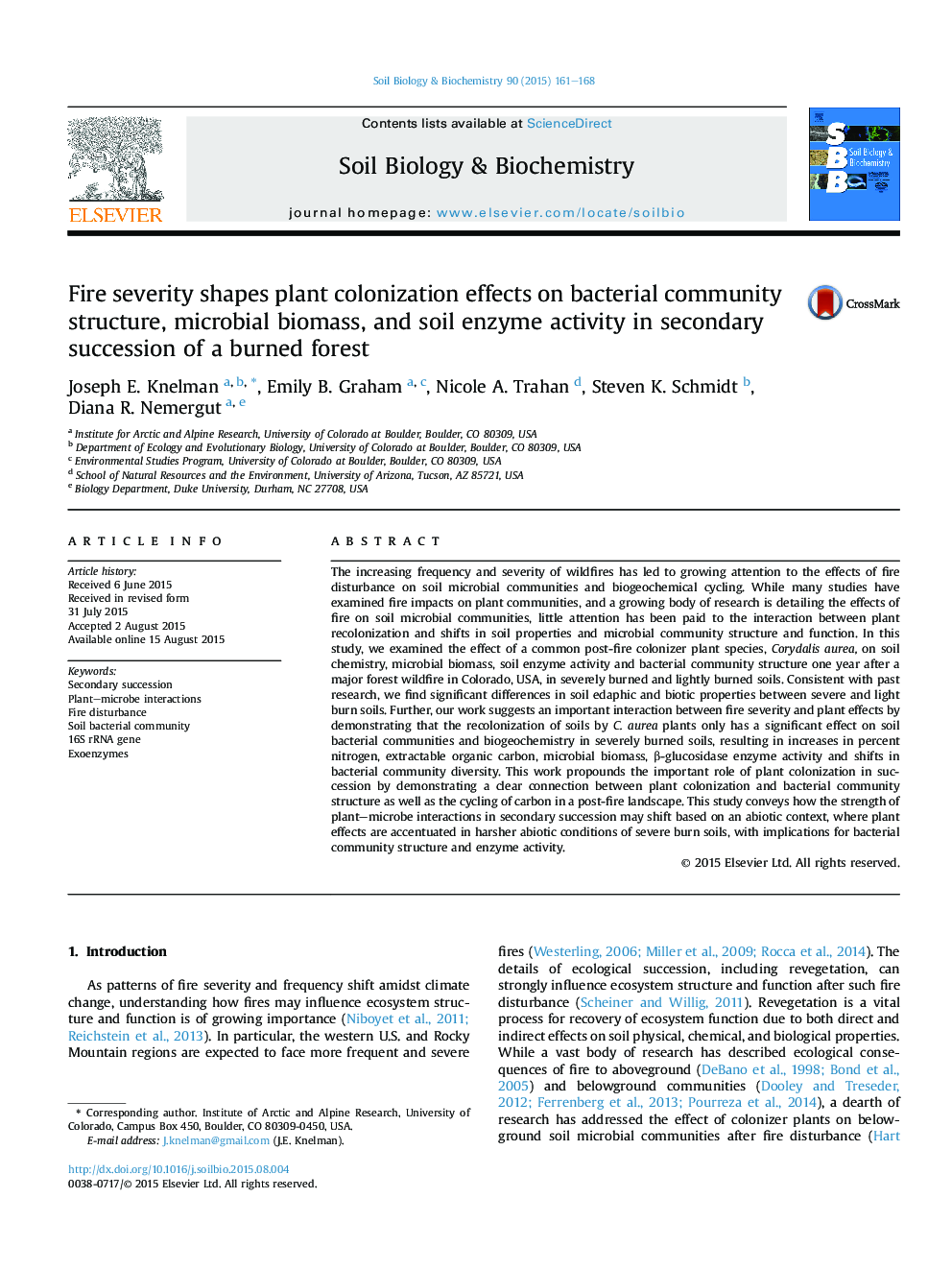| کد مقاله | کد نشریه | سال انتشار | مقاله انگلیسی | نسخه تمام متن |
|---|---|---|---|---|
| 2024389 | 1542594 | 2015 | 8 صفحه PDF | دانلود رایگان |
• We address how post-fire plant colonization impacts belowground succession.
• Plant colonization alters soil properties and microbial community structure/function.
• Plant colonization interacts with fire severity to impact severely burned soils only.
• Plant colonization indirectly effects increases in microbial carbon cycling activity.
The increasing frequency and severity of wildfires has led to growing attention to the effects of fire disturbance on soil microbial communities and biogeochemical cycling. While many studies have examined fire impacts on plant communities, and a growing body of research is detailing the effects of fire on soil microbial communities, little attention has been paid to the interaction between plant recolonization and shifts in soil properties and microbial community structure and function. In this study, we examined the effect of a common post-fire colonizer plant species, Corydalis aurea, on soil chemistry, microbial biomass, soil enzyme activity and bacterial community structure one year after a major forest wildfire in Colorado, USA, in severely burned and lightly burned soils. Consistent with past research, we find significant differences in soil edaphic and biotic properties between severe and light burn soils. Further, our work suggests an important interaction between fire severity and plant effects by demonstrating that the recolonization of soils by C. aurea plants only has a significant effect on soil bacterial communities and biogeochemistry in severely burned soils, resulting in increases in percent nitrogen, extractable organic carbon, microbial biomass, β-glucosidase enzyme activity and shifts in bacterial community diversity. This work propounds the important role of plant colonization in succession by demonstrating a clear connection between plant colonization and bacterial community structure as well as the cycling of carbon in a post-fire landscape. This study conveys how the strength of plant–microbe interactions in secondary succession may shift based on an abiotic context, where plant effects are accentuated in harsher abiotic conditions of severe burn soils, with implications for bacterial community structure and enzyme activity.
Journal: Soil Biology and Biochemistry - Volume 90, November 2015, Pages 161–168
